When you think of Bangkok, you usually think of tall buildings, temples, pad thai, and cheap markets. But what if I told you that Bangkok has been fighting a receding shoreline. Within the Gulf of Thailand, just south of the city, at least 2km of shoreline have been lost to rising sea levels in the past decade.
Bangkok, along with many other coastal cities in Asia, have been experiencing land lost due to climate change. In an effort to combat rising sea levels, city officials and locals have come together to grow a mangrove forest in Bangkok in hopes of preserving the ecosystem.
You can read more about their efforts on Thaiembdc.org
What is a Mangrove Forest?
A mangrove forest is made up of mangrove trees. These trees can live in salt water and are very strong. They usually have exposed roots that provide habits for animals. There are 110 different species of mangrove trees, however only a few are considered authentic.
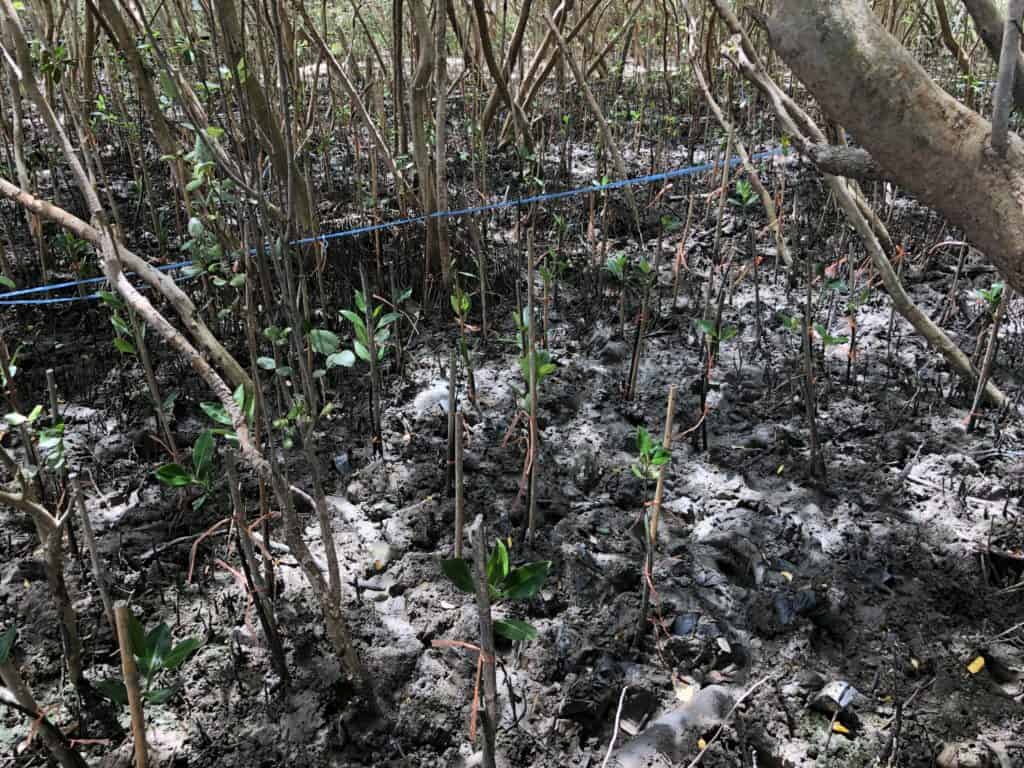
These are some benefits of a mangrove forest:
- Trap sediments and stabilize the coastline
- Provide habits for fish, turtles, shrimp, and many other animals
- Offset carbon dioxide at double or more than the rate of tropical forests
- Coastal communities are able to benefit from the livelihood of the mangrove forest for stable food and farming
How You Can Help
Ecotourism is on the rise as more people become aware of the dangers of climate change. There is a district called Bang Khunthian where the mangrove forest in Bangkok is being grown.
It is fairly close the city and accessible by taxi or train. To reach the mangrove forest by train from the city, first take BTS to Wongwain Yai station, then walk to the commuter train station which also bears the same name. You will get off at Bang Bon station which takes about 20 minutes to reach.
From there you’ll have to take a song thaw to Khlong Pittayalongkorn School where you will be able to rent a bike for 30 baht and bike to the mangrove forest. You’ll know you’re in the right place when you see a giant crab statue out front.
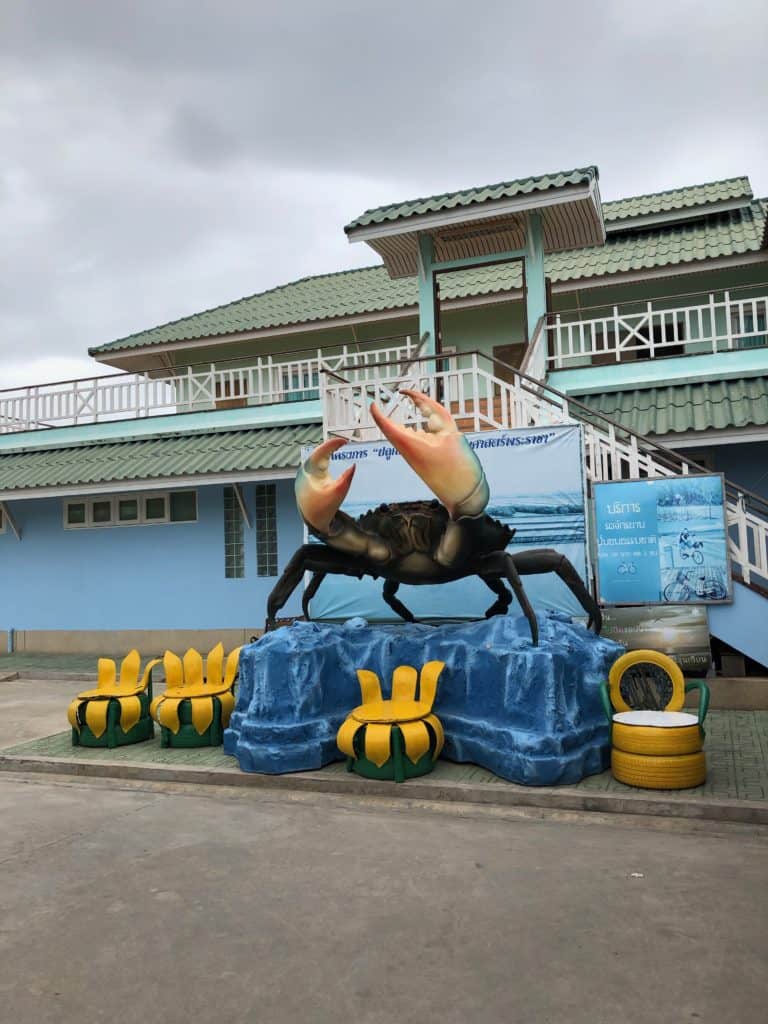
Depending on how fast you bike it will take 15-30 minutes to reach the coastline. Along the way you’ll come across families that live in the mangrove forest. There is a designated path to bike on and you’ll see the development of the forest. There will be an area near the end where you can plant mangrove trees for 40 baht or you can buy a bag of seeds and slingshot them into the water.
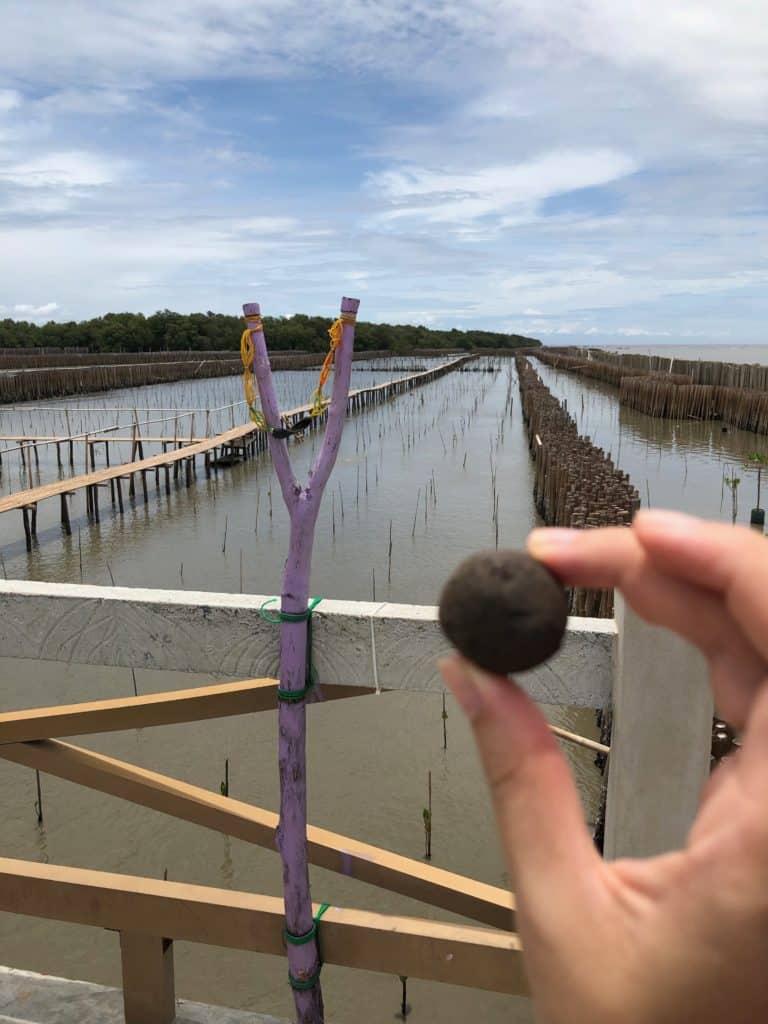
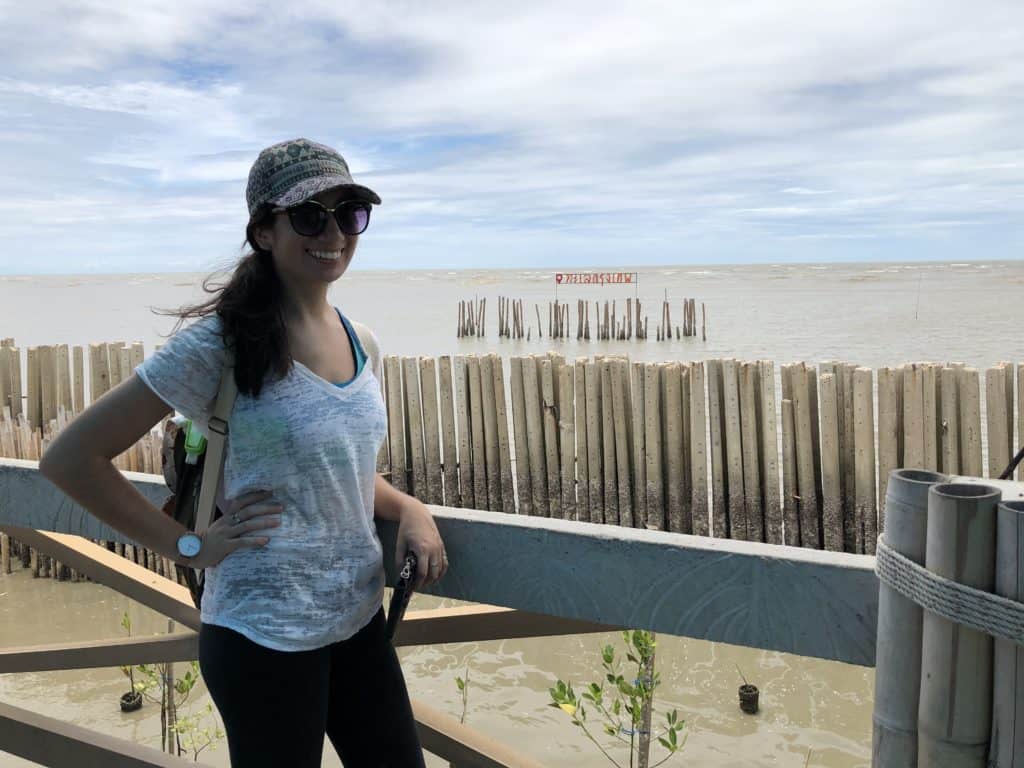
Support the Local Community
Along the bike path there are many family restaurants that specialize in seafood from the mangrove forest. I ate at a place called Restaurant by the Sea (ครัวริมทะเล). The food was very fresh and tasted like the ocean. The prices were reasonable. I recommend coming with a group to try a bunch of different dishes.
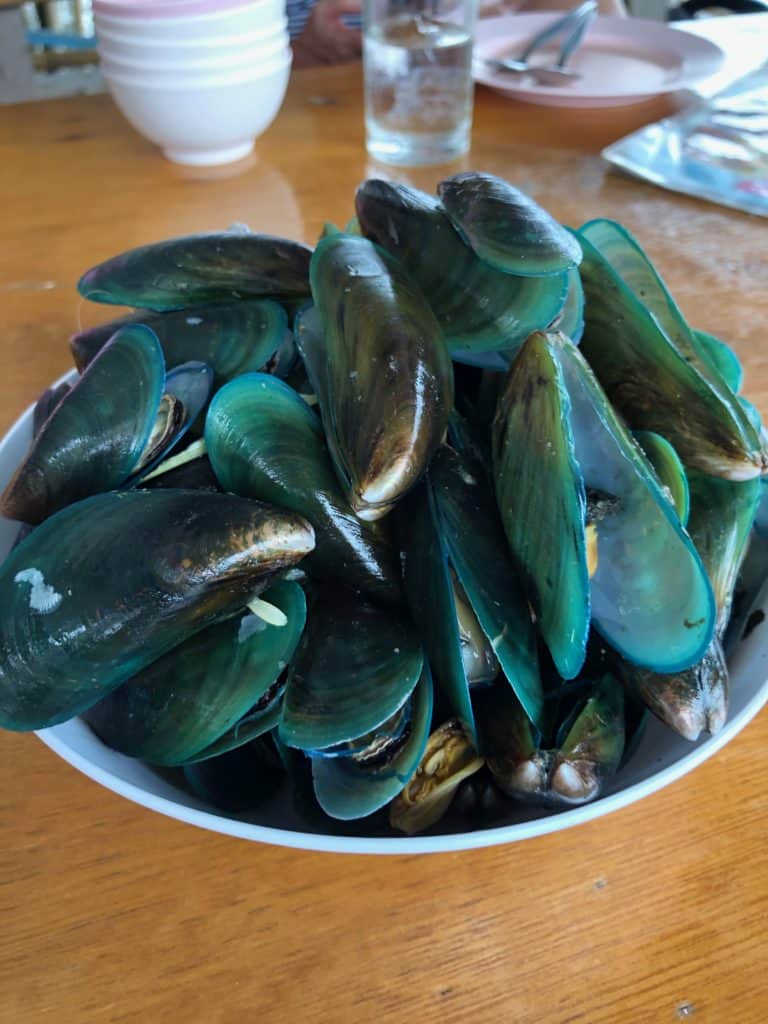
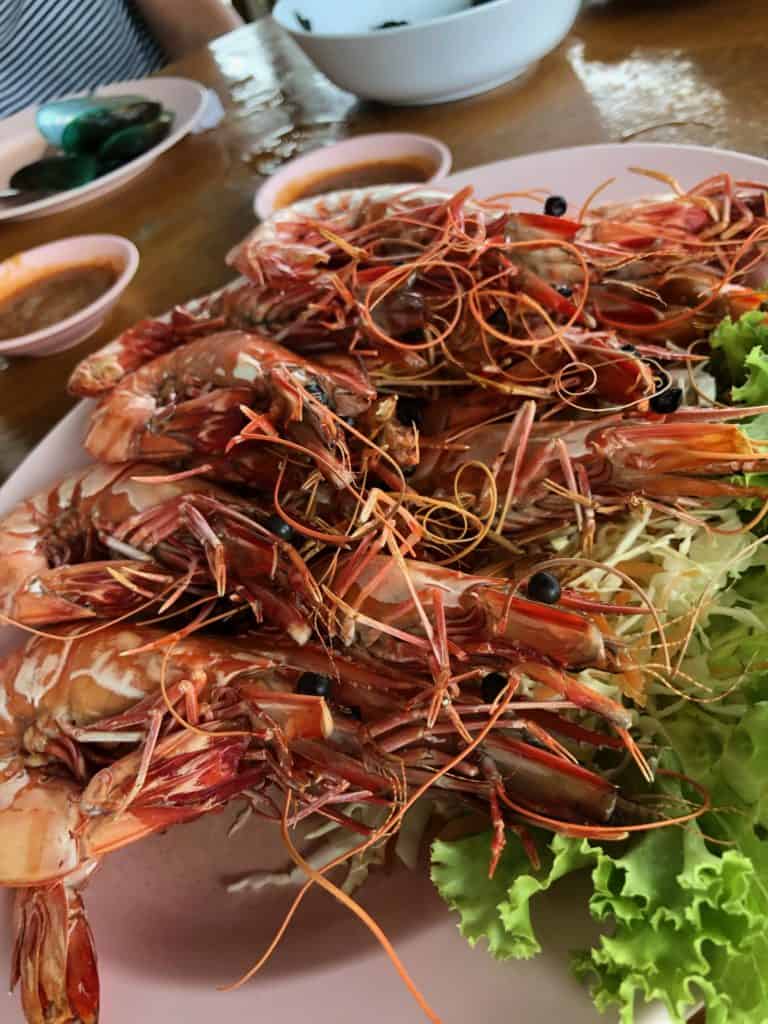
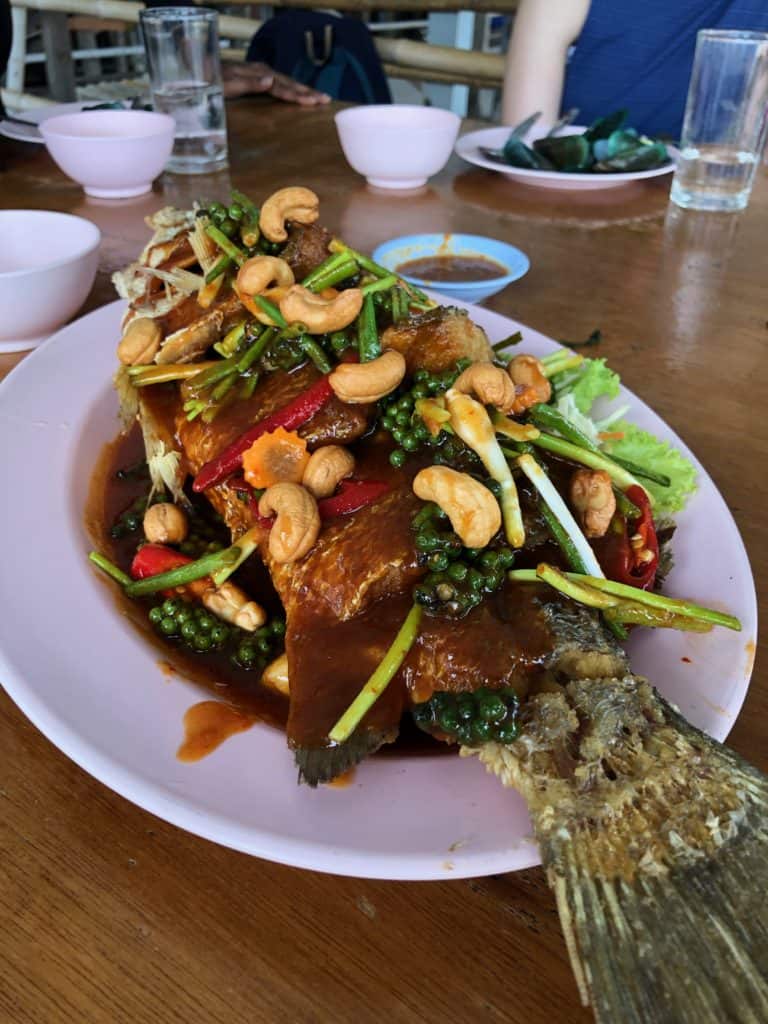
While eating we noticed that there was an object way out in the distance from the restaurant. The guide informed us that it is a temple that used to be on land. The restaurant provides a boat to the temple, but due to high waves we weren’t able to see it up close. It was about 2km away. It definitely puts into perspective how much land has been lost in recent years.
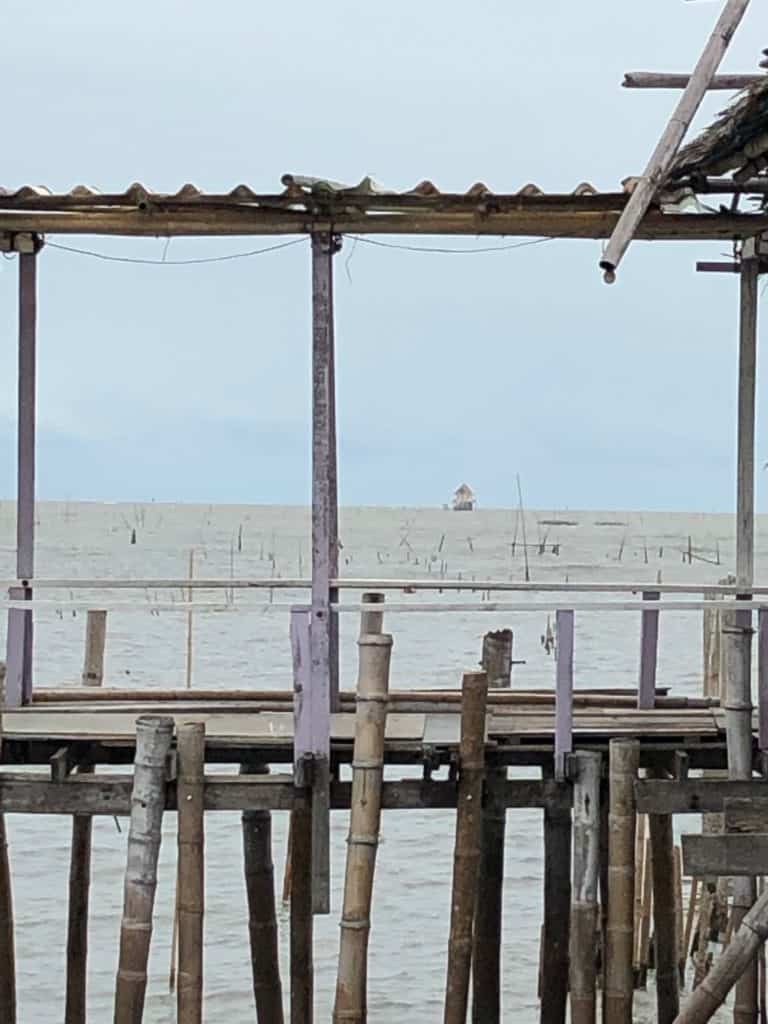
Also check out the Bangkok Post for more information about the mangrove forest.
For more eco friendly and sustainable tourism options in Thailand check out this post.
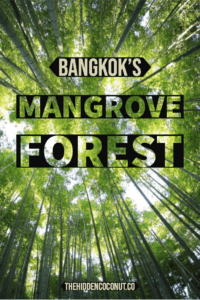
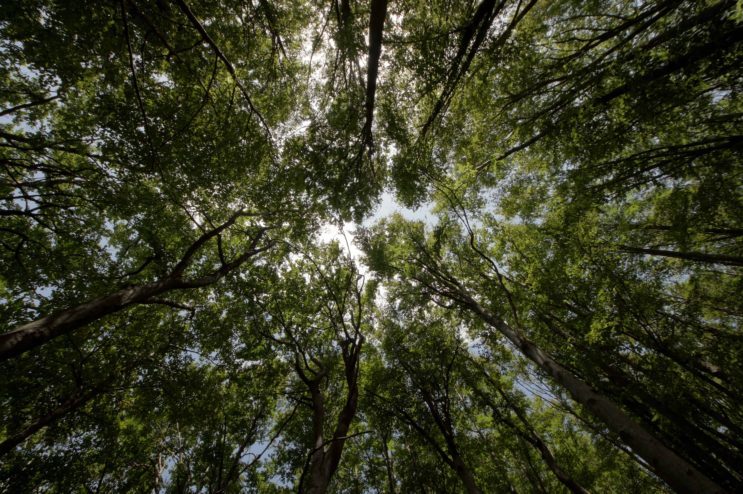
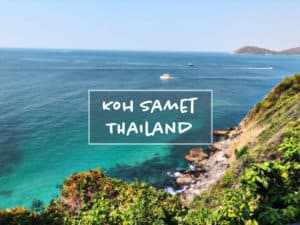
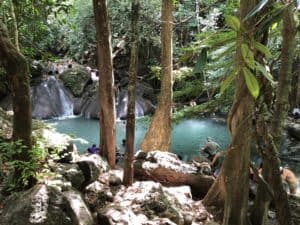
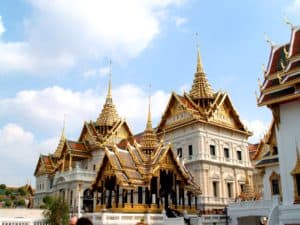
Pingback: Thailand Bucket List | 10 undiscoverd things to doThings to do in Thailand
I love this! I love learning about eco-friendly travel options! Thanks for sharing! Beautiful pictures too!